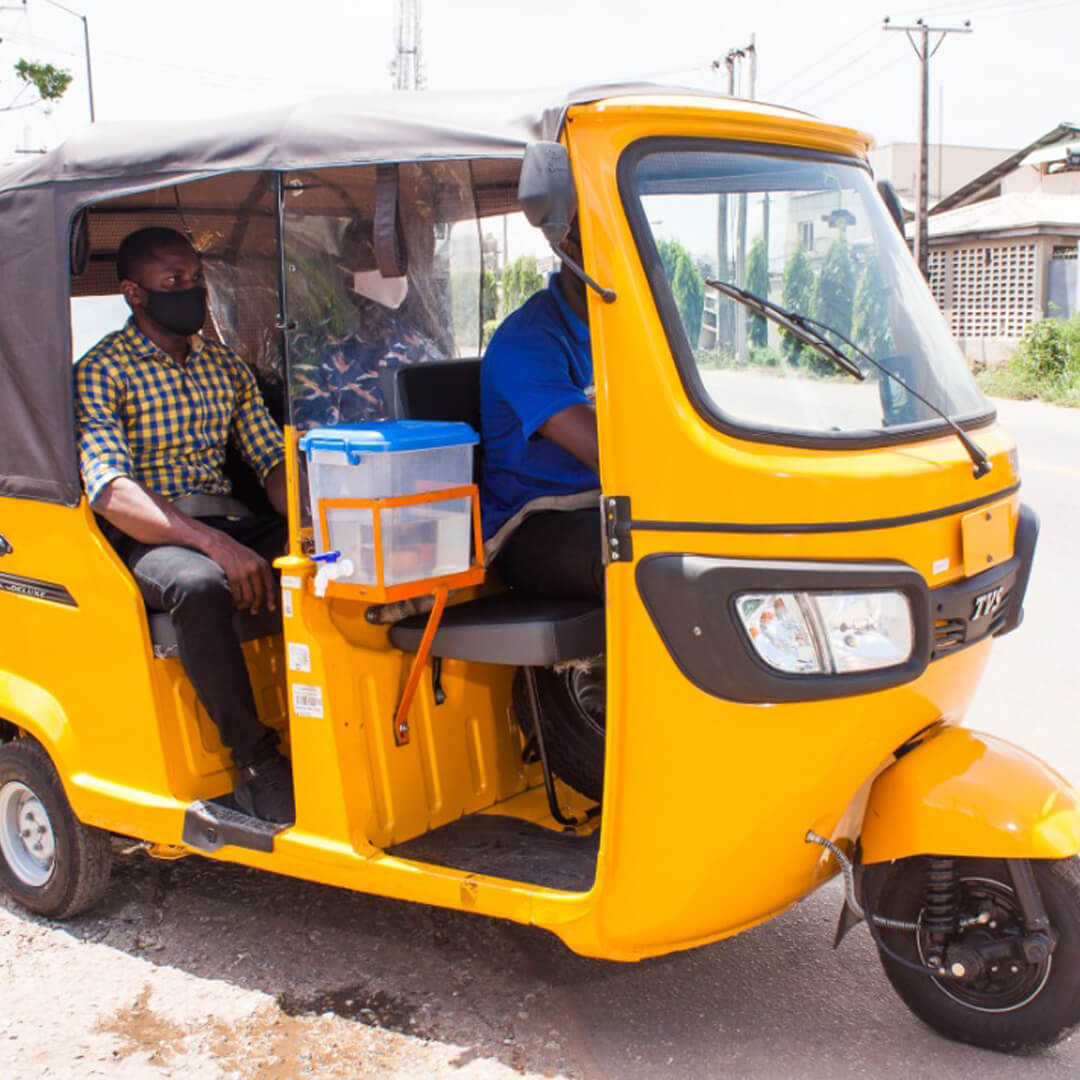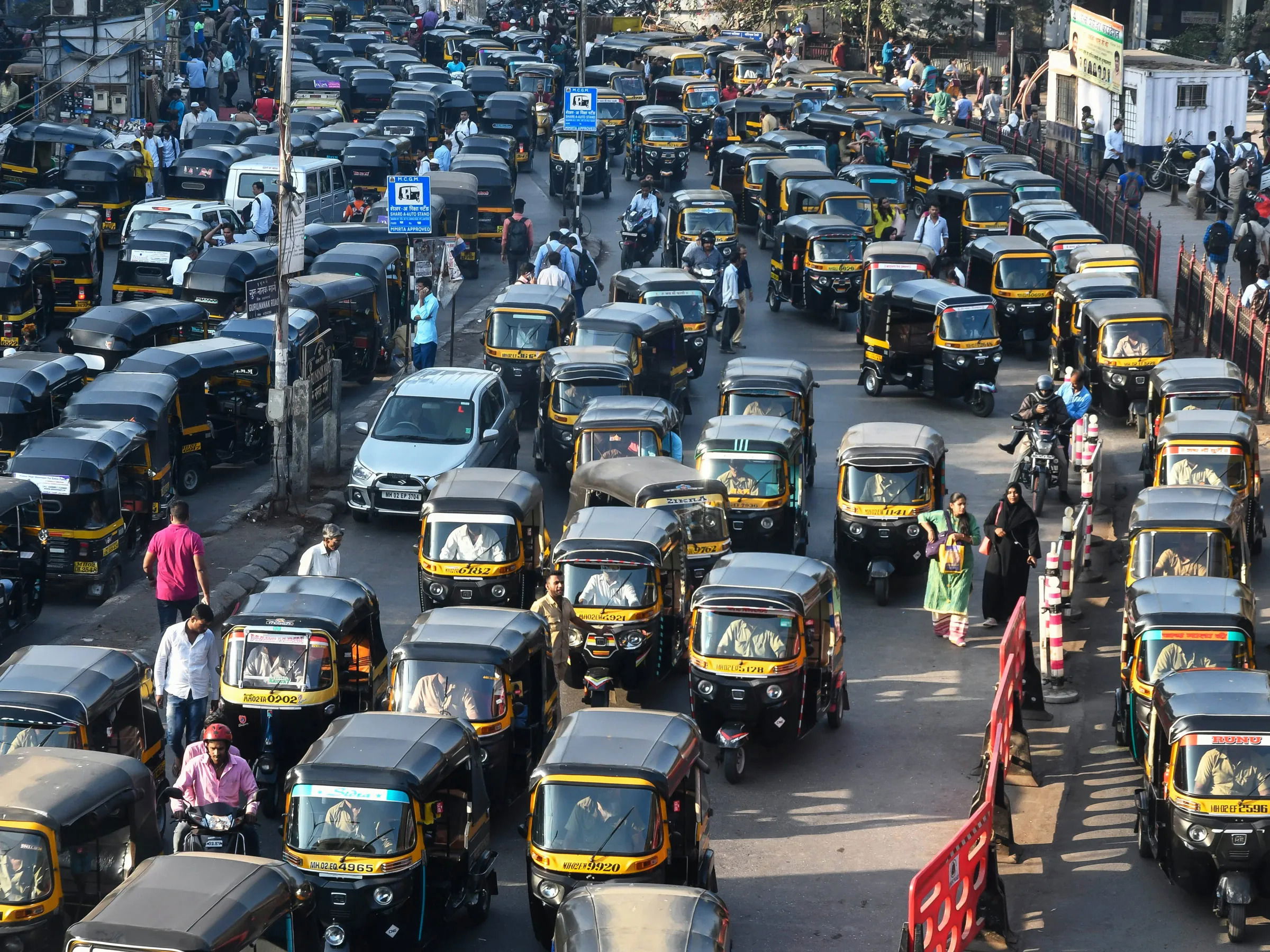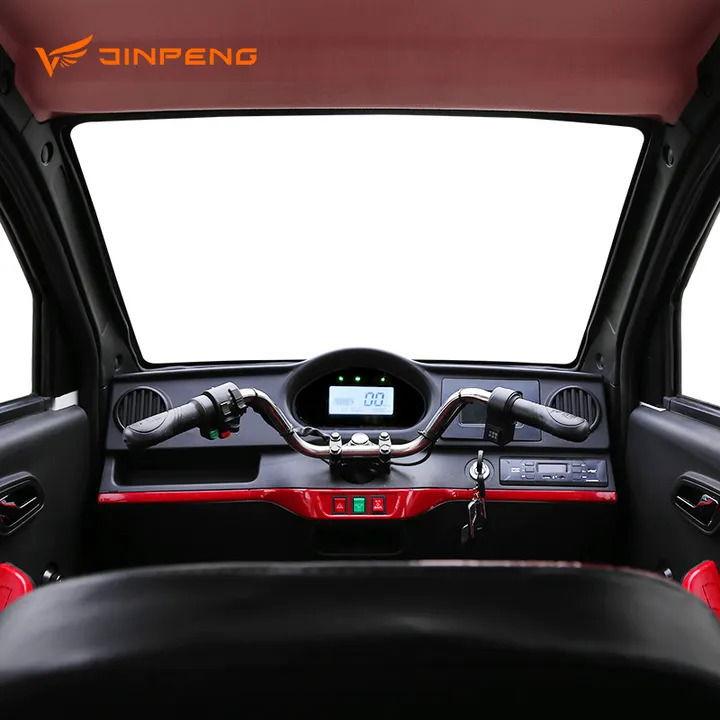Author: Philip Uwaoma
In July 2020, Businessday Nigeria reported that roughly 400,000 tricycles ply Nigerian roads as a means of commercial transportation. The study predicted the figure to reach two million. That was more than three years ago. With no published reputable statistics data to rely on, we can correctly assume the number of commercial tricycles (also known as “keke napep,” or just “keke”) have surpassed the predicted 2 million by now. We don’t even have to assume.
Bajaj, the dominant tricycle brand in Nigeria, is assembled and marketed in the country by Stallion Auto Keke Limited under the Stallion Group. In March 2022, the company celebrated the production of its 100,000th tricycle sold in the country. Now, that’s just Bajaj, which competes with other brands, including TVS, Daylong, and Piaggio, in the Nigerian keke market.
You’d remember that Keke (which is the Yoruba word for "Bicycle") was already present in Lagos and Northern Nigeria from the time of Buba Marwa, but it wasn’t until 2002 that it gained widespread traction as a poverty alleviation program under President Olusegun Obasanjo’s administration. Two decades on, keke is, sadly, empirically no longer the means of survival it used to be for the underclass or even the middle class. Why?
Related Reading: Meet The Small But Mighty 500-Horsepower Telo Truck MT1, A New Electric Pickup By US Startup Company
How Much Is Keke In Nigeria Now?

The TVS Deluxe Plus iTouch, reportedly the brand’s most advanced passenger tricycle, currently retails for ₦1.7 million – ₦1.9 million. This model features the newly introduced and patented ISG (Integrated Starter Generator) technology that not only saves fuel but also enables a smoother, noiseless start.
The cargo-hauling model branded as TVS King Kargo retails at a similar price point as the passenger model. Both are powered by the same 199.26cc 4-stroke, liquid-cooled engine producing 10 horsepower at 5,500 rpm and 11 lb-ft of torque at 3,500 rpm. The non-iTouch model makes slightly less – 8.8 horsepower.
Similarly, brand-new Bajaj passenger and cargo tricycles currently retail at slightly over ₦2 million. Don’t be surprised to comb the market for used models and hear figures like ₦750,000 for a used keke.
We’ve been informed (we haven’t verified yet) that Innoson tricycles go for around ₦1.5 million. It’s saddening, isn’t it, that ₦1.5 million is now the most affordable for what is essentially a 64-year-old Indian technology.
How Keke Tricycles Was Born

Bajaj is often credited for introducing auto-rickshaws in 1959, but historical records show Indian lawyer-turned-entrepreneur Navalmal Firodia, same man who also coined the term “auto-rickshaw”, pioneered the tricycle we now know as keke in the late 1940s to replace cycle-rickshaws in India.
In 1948, the government would later approve it as a means of public transportation in Bombay province. So, yes, the petrol-powered keke tricycle is a very old Indian engineering that, unfortunately, the underclass of Nigerian society can no longer afford. Barely ten years ago, both youths and family men could save and buy a brand-new keke with ₦400,000 and make a decent living with it.
Thanks to keke, people have started from scratch and saved up enough money from their keke business to travel out of the country for a better life. If it was now that keke costs upward of ₦2 million, many of those people may never have made it.
Related Reading: Check Out The ₦22 Million Citroen e-C3 Electric Supermini Coming To Town This October
₦2 million?
Not very long ago, you could buy a healthy Toyota “pencil light” Camry with that money and have some change. In other words, what was invented as a means of poverty alleviation can no longer alleviate poverty, and that’s why I said keke is no longer the means of survival it used to be for the underclass.
Worst still is that fueling alone eats deep into the keke rider’s earnings, thanks to the strangling cost of fuel in recent months. The current Nigerian government was sworn in on May 29, and by July, the pump price of fuel had tripled.
By October, the prices of diesel and jet fuel had risen by over 50%. Specifically, the pump price of PMS stood at around ₦192 per liter but now sells at over ₦626, which means a price increase of a whopping 227% in such a very short time, strangling the country as a whole and putting businesses like keke in a serious quandary.
We could argue that keke riders adjusted their fares accordingly, but the reality is that the pump price of fuel is so high the margin of profit is simply not the same, regardless of the adjustment in passenger fares.
Although the economic and societal implication of increasing transport fares for the public is another head of the hydra we won’t be confronting here, let’s just note that the National Bureau of Statistics (NBS) recently released a report indicating inflation rose to 24.08 percent in July 2023 from 22.79 percent the month before, while the rate of food inflation increased to 26.98 percent in July from 25.25 percent the month prior.
The Nigerian government has repeatedly assured the country that CNG is the way forward. Perhaps, the government should be talking “electric” instead of CNG.
Related Reading: The UK’s Most Affordable Electric Car, The ₦6 Million Ark Zero, Might Just Be The Perfect Commuter Car
Why Electric Tricycles Should Be Nigeria’s Next Keke NAPEP
When former President Olusegun Obasanjo celebrated his 85th birthday last year by distributing 85 tricycles, and was seen riding one himself, picking and dropping off passengers across his hometown of Abeokuta, Ogun State, the AAC presidential candidate Omoyele Sowore accused the ex-president of “wickedness.”
“Nigeria,” Sowore said, “should not be celebrating keke napep in 2022. We should be in full mass transit mode with intercity and intra-city urban mass transit trains-clean energy powered and affordable.”
Whether or not Obasanjo was celebrating Keke NAPEP, let’s focus on the “clean energy” part. No matter what you think of it, the compact and efficient nature of keke tricycles has undeniably made them not only a means of survival for many but also a safer, cheaper alternative for conveying people on short distances and last-mile destinations.
However, the need to upgrade to something more sophisticated, efficient, green, and sustainable is even more expedient now that Nigerians have to pay roughly ₦2 million to buy the auto-rickshaw we know as "keke" and then go on to spend an estimated ₦2 million a year on fuel. For many in some parts of the country, it could take up to two years to recoup the investment.
So, what's the alternative?
As the sun set in 2022, Zeta Autos unveiled plans for CNG-powered tricycles, which they claimed will hit the market in January 2023. Where are Zeta’s CNG keke? Your guess is as good as mine.
Related Reading: These Are The Top-Ten Cheapest Electric Cars Money Can Buy Right Now
Does it even matter? The experience is still fresh with the price of kerosene. Nigerian families turned to the then-cheaper cooking gas, only for the price of gas to rise astronomically as well. This is the very reason many auto owners are hesitant to switch to CNG, even though high fuel cost is squeezing everyone like a rag doll.
Today, the government is dangling the proposed price of around ₦230 per kg of CNG like a carrot to a horse. But what happens after spending hundreds of thousands of naira to convert your car only for CNG prices to soar to ₦600 or maybe ₦1,000/kg? After what we’ve seen in recent months, ₦1,000/kg of natural gas won’t be surprising.
The country needs to go electric. The keke riders I talked to before writing this article thought the idea of electric keke was brilliant only if Nigeria had something even remotely close to stable power. They have a point. Indeed, what's the point of an electric tricycle when you have to buy fuel to power your generator to charge your keke? Still, it can be done.
Even if stable electricity remains a pipe dream in Nigeria, solar-powered charging stations in strategic locations can be what we need to revolutionize the country’s energy and transportation needs. All it takes is a visionary entrepreneur.
Take the Chinese-made Jingpeng electric tricycle in the video above, for example. It has a 4-passenger capacity and features a more humane and modern design. At $3,675.00/unit (₦4.410 million at ₦1,200/$), this Jinpeng closed electric tricycle costs significantly more, but it offers a far more cost-effective alternative to what we currently have here.

According to Jinpeng, it takes 6 to 8 hours for the 48v–60v/70ah battery to get fully charged, which provides a range of around 44 miles. The 48v800w– 60v1000w motor gives the tricycle a top speed of around 19 mph. These are excellent stats for light inner-city transportation, although an 8-hour charge time will most certainly need plugging the vehicle overnight.

In any case, investing in EVs at this scale shows a government serious about leveraging the remarkable synergy between empowerment and sustainable technology. According to Statista, South Africa currently has “the most advanced e-mobility market in Africa,” with about 1,000 electric vehicles (EVs) in 2022 - out of a total fleet of 12 million automobiles.
As the so-called giant of Africa, Nigeria must take the lead in electrification not only because it is a cheaper alternative but also because of the societal benefit and the immediate need to tackle climate change and energy stability.
